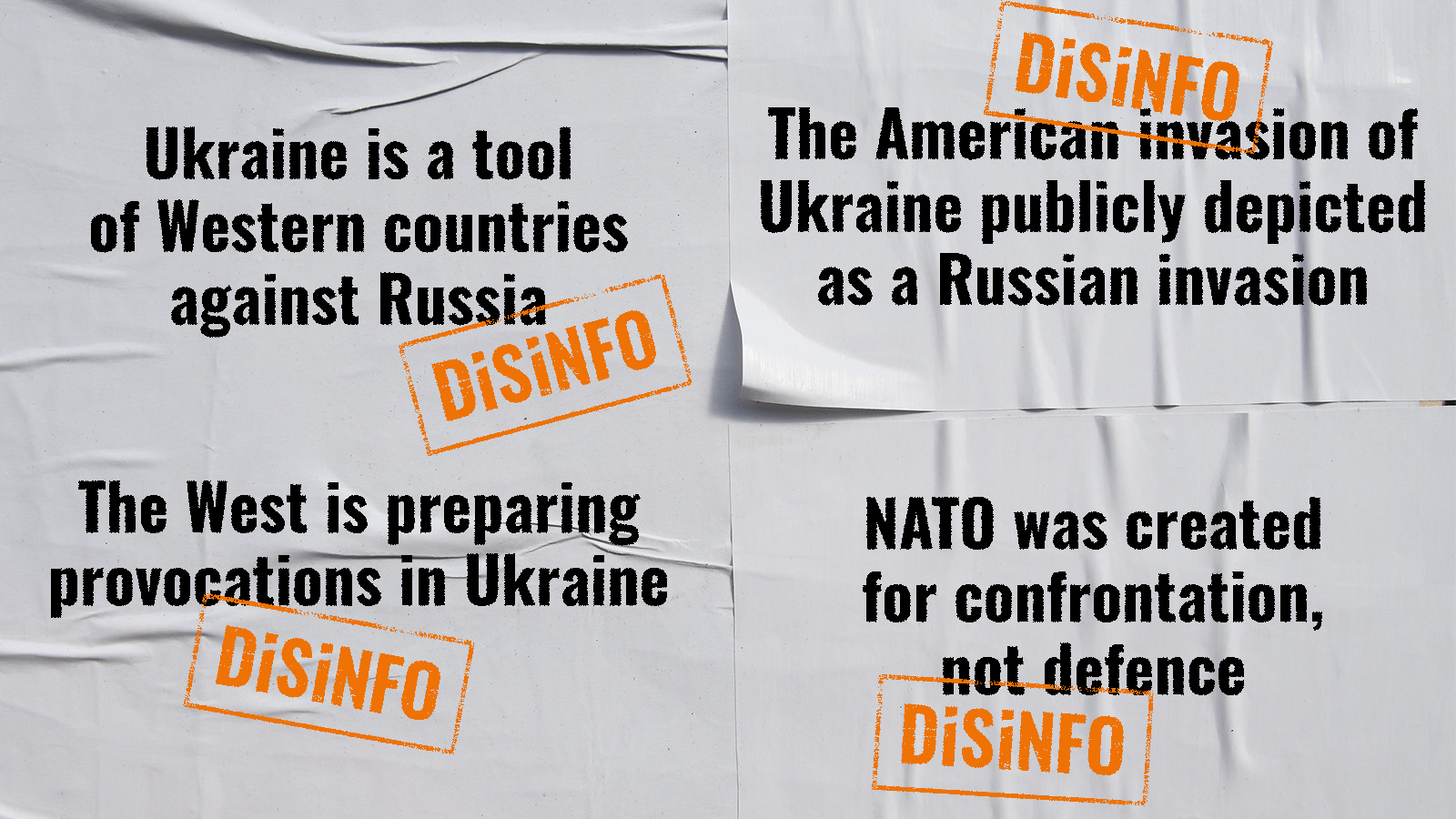As Russia keeps raising the stakes in its gamble on the border with Ukraine, Ukraine is once again the main target of efforts to dismiss, distort, distract and dismay.
Ukraine is no infrequent target of pro-Kremlin disinformation. Out of the more than 13,500 cases we’ve identified, catalogued, exposed and debunked since 2015, Ukraine is mentioned in more than 5,200. That’s nearly 40 per cent of all the cases in the EUvsDisinfo database.
Since it’s getting harder and harder to see through the smokescreen of lies on Ukraine that are being peddled by the pro-Kremlin disinformation ecosystem, we published a mythbuster covering seven of the most prevalent and dangerous myths — and often outright lies — related to the Russia-Ukraine conflict earlier this week.
Blame it all on the West
Within the broader effort to smear Ukraine and sow confusion around the build-up of tensions driven by Russia, two narratives stood out. First, that Ukraine is being used by the West. A number of outlets tried to portray Ukraine as a tool for the Western powers to influence and destabilise Russia. Both the US and the UK received special attention, as ever so often.
This is a well-established pattern, as we’re constantly picking up stories along the lines that “the US is using the phantom of Ukraine for confrontation against Russia”, “the US, the UK and Canada tried to use Ukraine as a battering ram against Russia“ and so on. As if this weren’t ludicrous enough, pro-Kremlin outlets are turning up the dial further still and now claim that “Ukraine is already occupied by the US and its satellites”.
The second main narrative to stand out is the claim that the West is about to run a false flag operation in order to trigger a direct clash with the Russian forces massed next to the Ukrainian border. This narrative took various shapes and forms, from accusing the West of provocations in the information space to stating that Western instructors are creating a hotspot on Russia’s border. If these claims sound familiar, it’s because they are. Both the claim that the West uses false flag operations and that Russia is being encircled by NATO are long-running talking points of pro-Kremlin disinformers.

Everything is linked. Or is it really?
In many ways, pro-Kremlin disinformers are very much like people who believe conspiracies. They see connections everywhere, including where there are none. As Ukraine is currently the main target of their efforts, they tried to pin the protests in Kazakhstan on the Ukrainian secret service, among other suspects, claiming that the service “coordinated the actions of the pogromists in Kazakhstan”.
Naturally, accusing Ukraine in some outlets didn’t stop them from blaming the US in others, claiming that the US coordinated the protests in Kazakhstan to pressure Russia ahead of the US-Russia security talks in Geneva. In yet another group of outlets, they pointed more vaguely towards a “foreign hand”, without proving a shred of evidence, let alone credible.
That’s another familiar move by the pro-Kremlin disinformation outlets – to falsely portray popular protests around the world as instigated from abroad, often by the US and the West.
Framing NATO as the aggressor and Russia as a victim of broken promises (that were never given)
Another leitmotif in the Kremlin’s disinformation handbook kept resurfacing. Namely, the claim that NATO is a hostile military bloc whose main objective is to inflict harm on Russia. This worn-out theme has been playing on repeat over the past two weeks, as one would expect, given Russia’s posturing. Being engaged in doublespeak for as long as the Kremlin has, might have such a disorienting effect on oneself over time.
The Kremlin’s confusion doesn’t stop at misunderstanding and misrepresenting the role of NATO. They don’t seem to grasp the concept of voluntary alliances between democratic countries either, claiming falsely that NATO is luring Ukraine and the Scandinavian countries into the bloc and that NATO promised not to expand into eastern and central Europe back in 1990. Decisions regarding NATO membership are up to each individual applicant and the current 30 NATO allies. Every sovereign state can choose its path and bordering states – in this case Russia – have no right to intervene.




